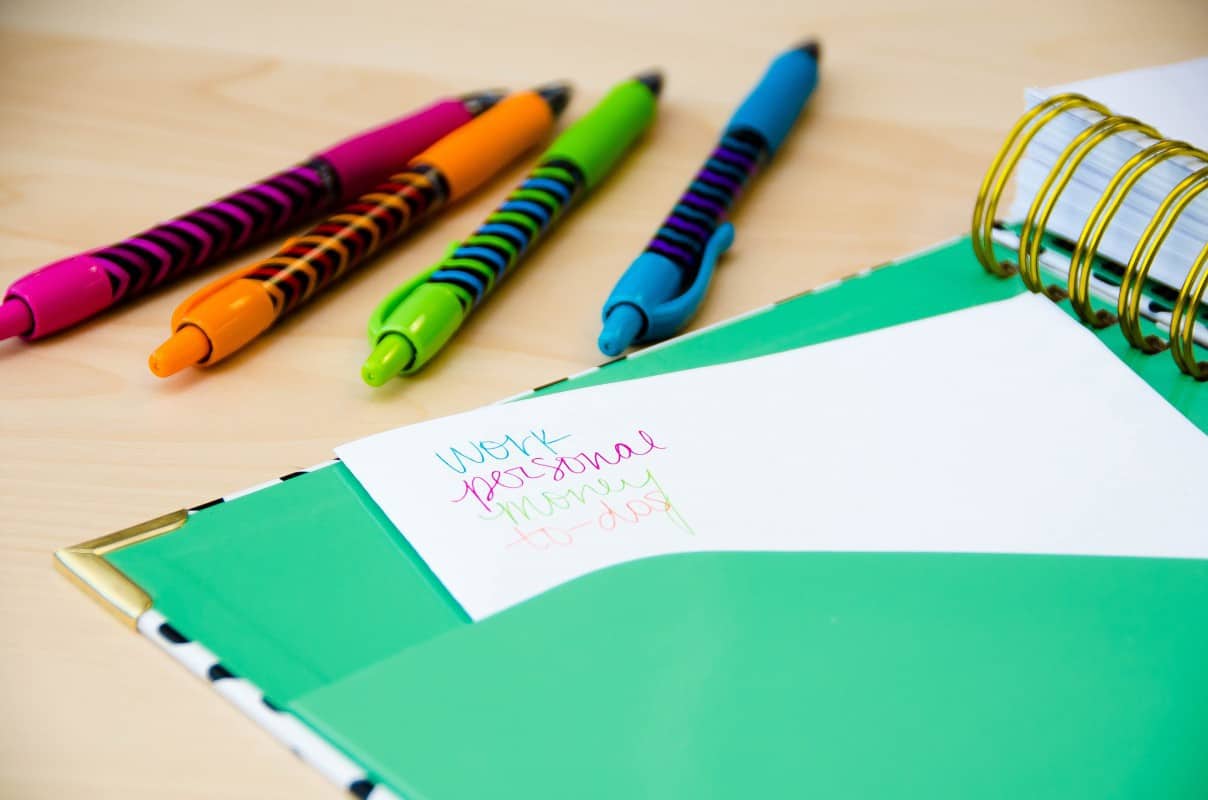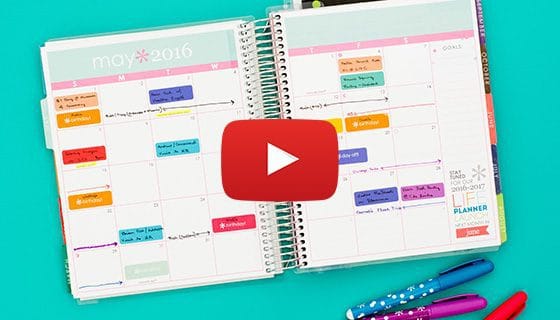Planner Organization: To Color Code or Not to Color Code?

Everything in my life is color coded. My clothes are color coded. My shoes are color coded. My dishes are color coded. And I spent three years religiously color coding my planner in college. Now that I have an 8-5 job and a planner with a highly efficient layout, I’m out of the color-coding business—for now, at least.
For the planner-obsessed, the decision to color code is a weighty one. You want to set yourself up for success, be organized, and maintain clarity throughout your days, and color coding could help you achieve that. But it also might become a hassle that stresses you out more than it helps you.
I’ve used both a color-coded and non-color-coded planner, so let my experience help you answer this eternal question.
Here’s the upside of color coding your planner.
Color coding my planner is what kept me sane and on top of things in college. Back then, I assigned each class, my sorority, work, and even chores a specific color. It took a lot of time and brainpower to consistently use the right colors, and I always had about 10 different pens with me, but it was worth it.
Honestly, I think I would have been incredibly overwhelmed if I hadn’t lived by color coding. A color-coded planner is clearer visually. You don’t need to actually read the individual items listed in order to tell if your day will be more consumed with work or chores. This can be beneficial when you’re constantly juggling multiple projects and people.
Now that I’m out of college, I still think there’s a huge benefit in color coding a planner, especially if you have to manage your family life, work, and some side hustles (and who doesn’t have at least one side hustle?). You probably don’t need as many colors as I did in college, though. Before I switched to the Day Designer planner last year, I used about five colors in my post-college Erin Condren planner. My categories were simple and little bit broader. Money, work, to-dos, social life, and fitness were and still are the main components of my daily life.
Of course, if you choose to color code, then you can create your own categories, such as family, blogging, clients, or whatever else you need to categorize. This helped me immensely as I was adjusting to life outside of college. It provided a feeling of control and organization, and it kept me from totally wigging out from all of the adult pressure.
There is a flip side, though.
I learned quickly after college that color coding isn’t time-effective. Once I started working in the professional world, I just didn’t have the time to color code every little task and plan like I used to. Color coding a planner requires constant maintenance. If your schedule and responsibilities are hectic and demanding, then color coding could simply add more stress to your life. The simple act of carrying around several pens can be a major hassle. And you might be more overwhelmed with the demand of color coding than you are by the plain scratches of a black pen.
I made the choice to call a ceasefire on color coding my planner because it no longer improved my life. It became too much to think about every single day, and my Day Designer honestly didn’t need the help. I understand the battle between choosing to color code or not, but the good news is that you can change your mind. I’ve gone back and forth several times.
Consider the following issues.
Do you have a family?
The only person I have to manage is myself, and that can be overwhelming in itself. However, I imagine that color coding a family planner would be immensely helpful. If you have kids and need to keep track of all of their various activities, then I recommend assigning a color to each of them.
This can make it easier to know that little Jimmy has a soccer game on Monday, and little Sarah has one on Wednesday. This can make it easier to assign chores, too. If Jimmy is the blue marker, then you can write all of his chores in blue so he’ll know that they’re his responsibility.
Do you feasibly have the time to color code?
You might not. I currently don’t. If you have a fast-paced life, then your attempt at color coding could fail. It might work despite a busy schedule, but there is a time requirement attached to the practice. Keep this in mind when making your decision.
If you have to jot things down and move around appointments a lot, then color coding simply isn’t going to work for you. However, if it’s crucial for you to have more organization, then you can make the time to color code. It all depends on what’s most important to you.
Will this add to your life?
This is an important question because there’s no reason to start frantically color coding if it’s not going to add value to your life. When I was in college, color coding did increase my quality of life because it reduced the anxiety I had associated with forgetting assignments. These days, it doesn’t add the same value because I don’t need the extra organization. Think hard on this one. You don’t want to start the act of color coding and the stress of it if it’s not going to actually provide you with substantial benefits.
Follow Terra on Instagram: @terrabrown3
Last modified on January 3rd, 2024






Show Comments +